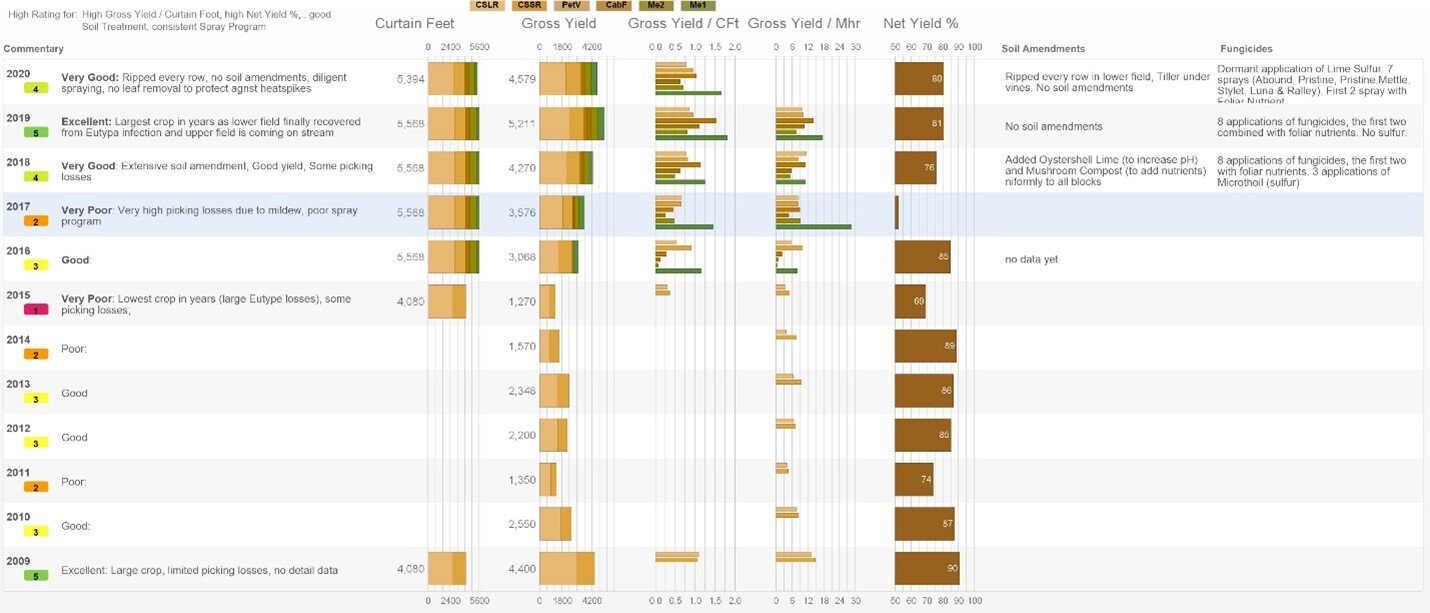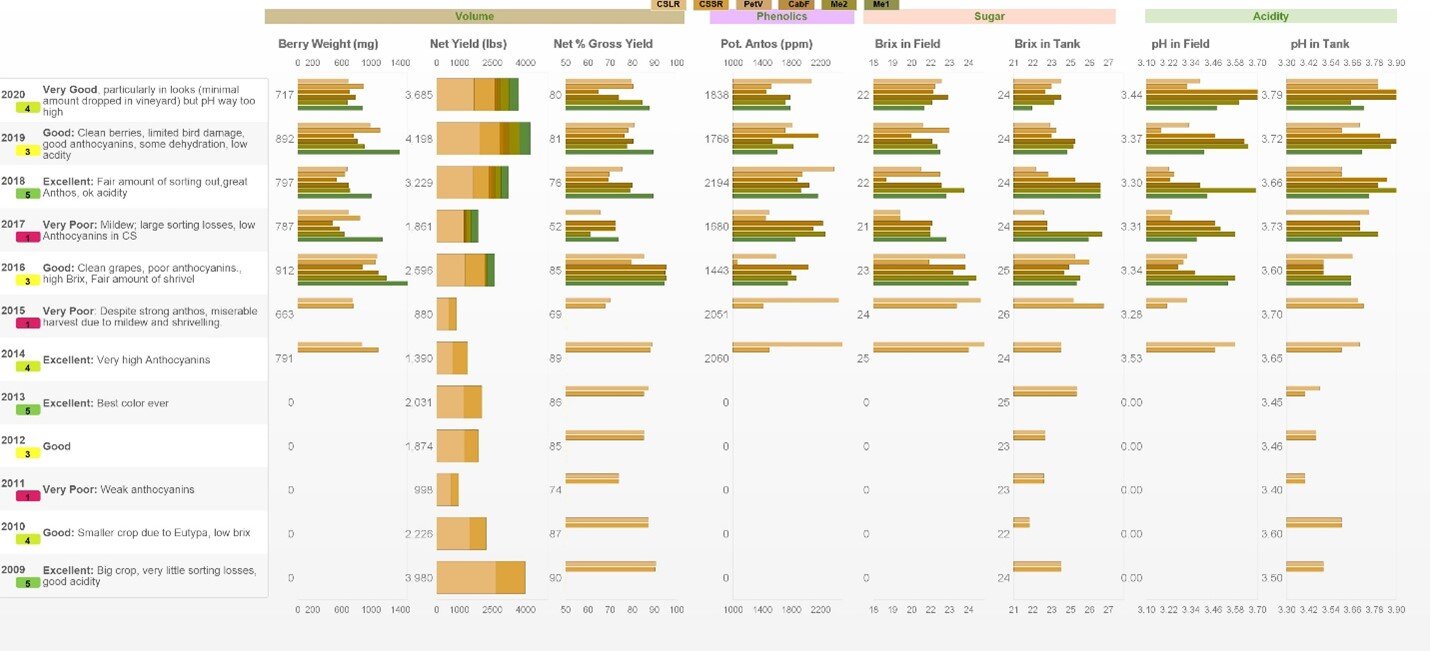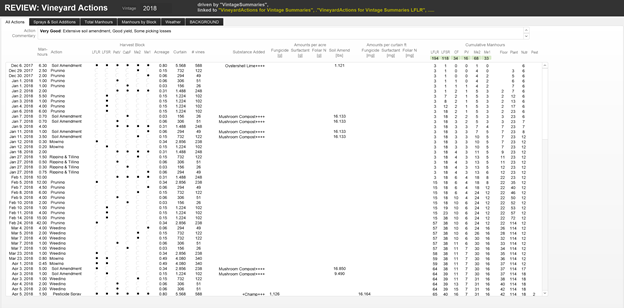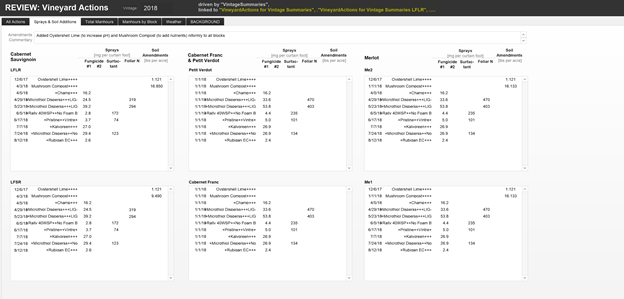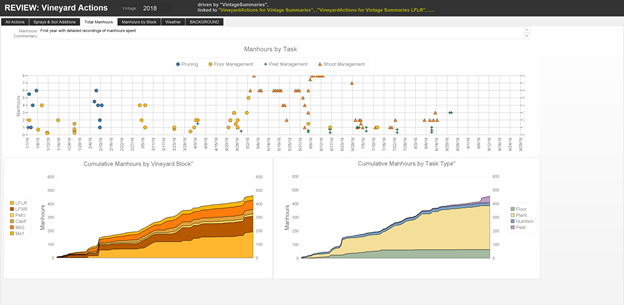Vineyard Overview
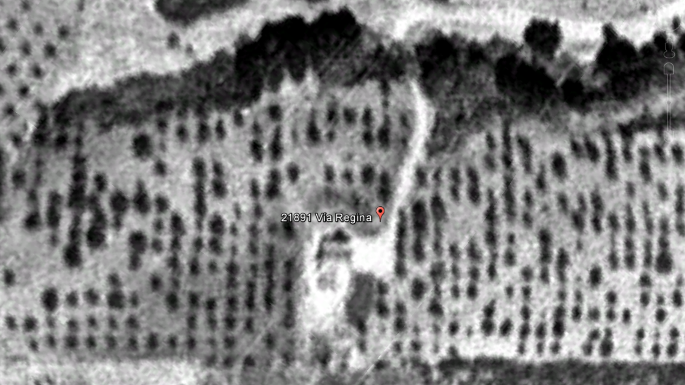
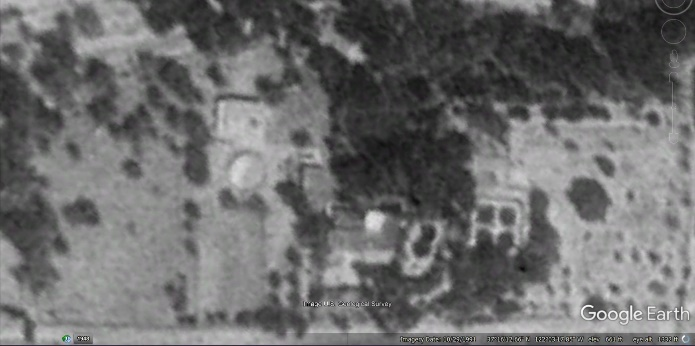
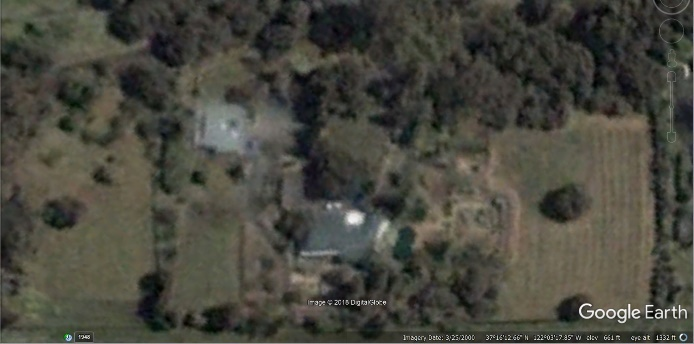
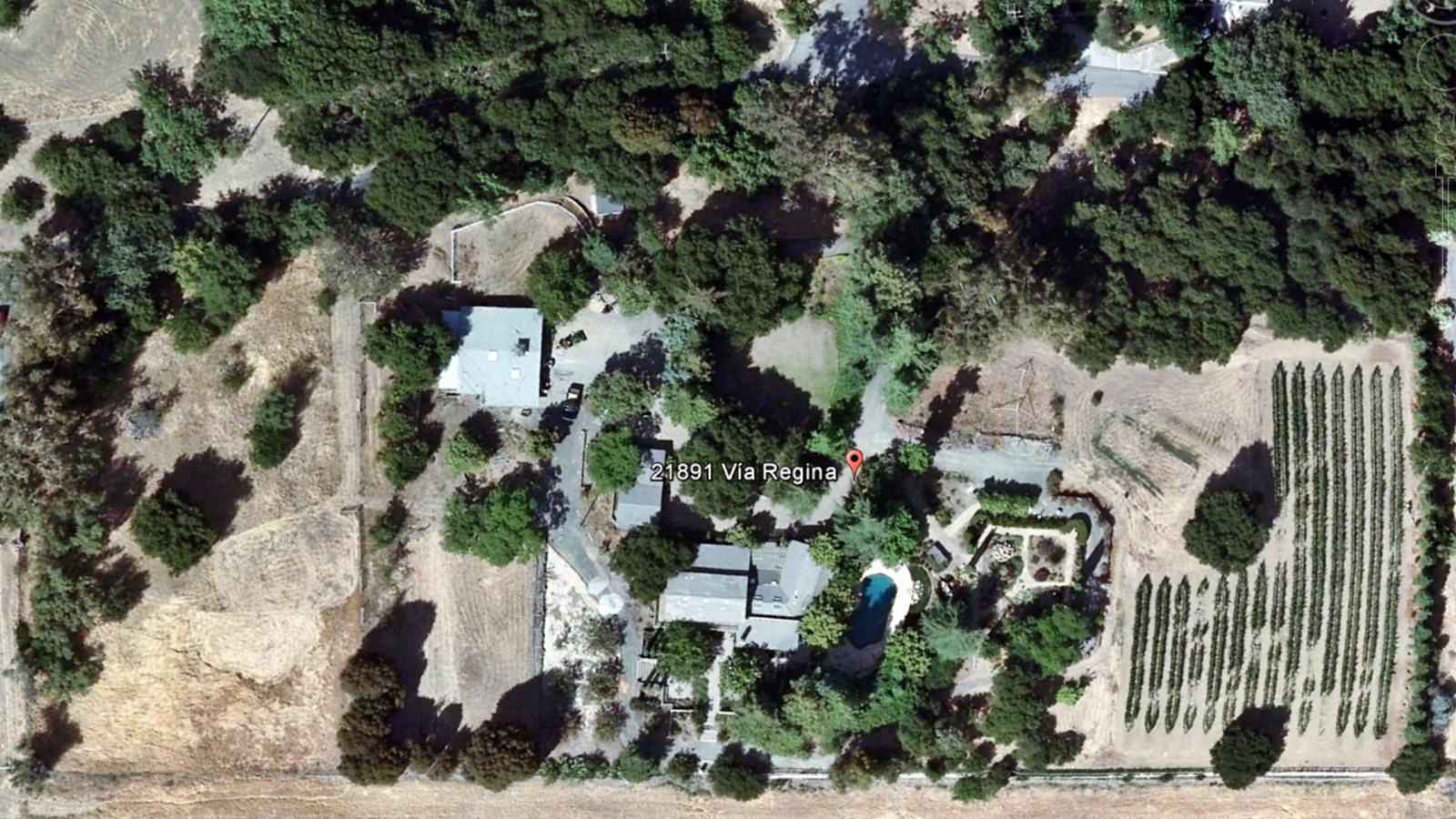
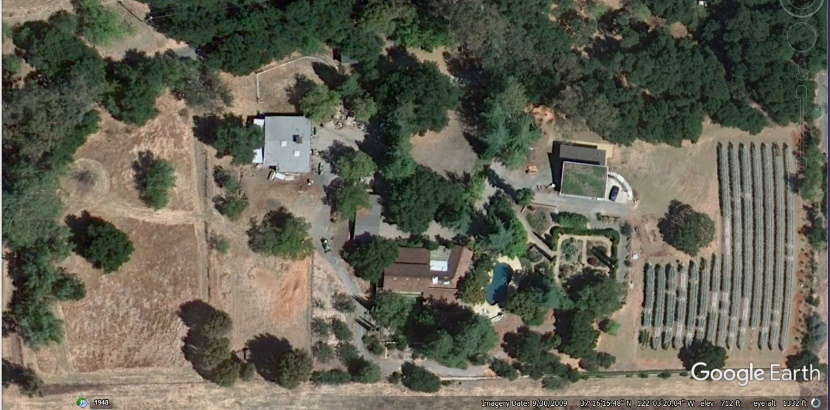
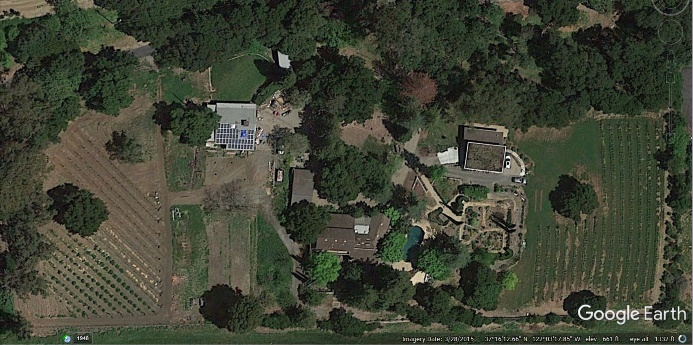

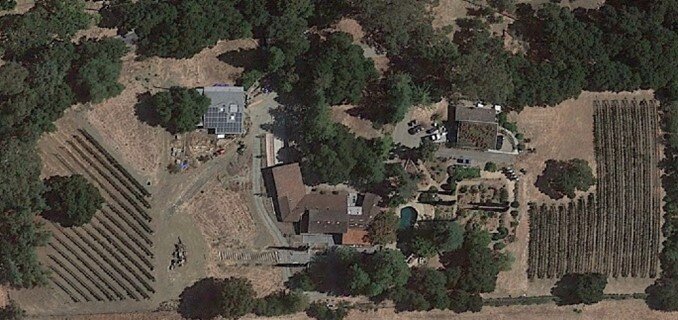
This page provides an overview of the Vineyard section. We cover the history of the vineyard, outline the section, review our practices over the last 25 years and describe what we measure and how we manage with the collected data. A pdf file of the entire section can be found here: 2021-05-07 VINEYARD Section pdf
History
The property has evolved over the last 70 years: It morphed from an orchard to a horse property to a vineyard and, finally, to a vineyard with a winery. These pictures from Google earth provide an aerial view of the evolution
We acquired the property in 1996 and planted the first vineyard in 1997 in the Lower Field (right in picture). We were new to the area in 1997 and babes-in-the-woods what regards vineyards, so we followed the recommendation of a friend to hire an expert in establishing and maintaining vineyards: Ron Mosely, then at Cinnabar Vineyards & Winery. Ron designed and planted it with Cabernet Sauvignon vines. He also managed the vineyard for the first three years – so we were not very involved at the beginning. In 2007 we decided to build a small winery (to the left of the Lower Vineyard). In 2014 we decided to plant a second vineyard for two reasons. First, the yields in the Lower Field were dropping due to diseases. Second, we wanted to augment our grape choices for blending the Cabernet Sauvignon with Merlot, Cabernet Franc, and Petit Verdot to get more of a Bordeaux style wine. We planted the Upper Field on our own with some consulting support from Ron Mosely.
Outline of the Vineyard Section
This section starts with two pages on how we established the vineyards:
1. Site Preparation describes what it takes to prepare the terrain for planting a vineyard
2. Planting & Replanting describes the decisions and activities in planting the vines
The pages which follow describe the annual tasks in managing a vineyard. We group these tasks into four pages, described in more detail below
3. Soil management
4. Plant Management
5. Nutrition management, and
6. Pest management
A final page in this section covers how we monitor the weather and why (7. Weather Monitoring)
We orchestrate the vineyard management tasks around the annual cycle of a vine which the following graphic summarizes:
We distinguish between the following steps, starting in November each year:
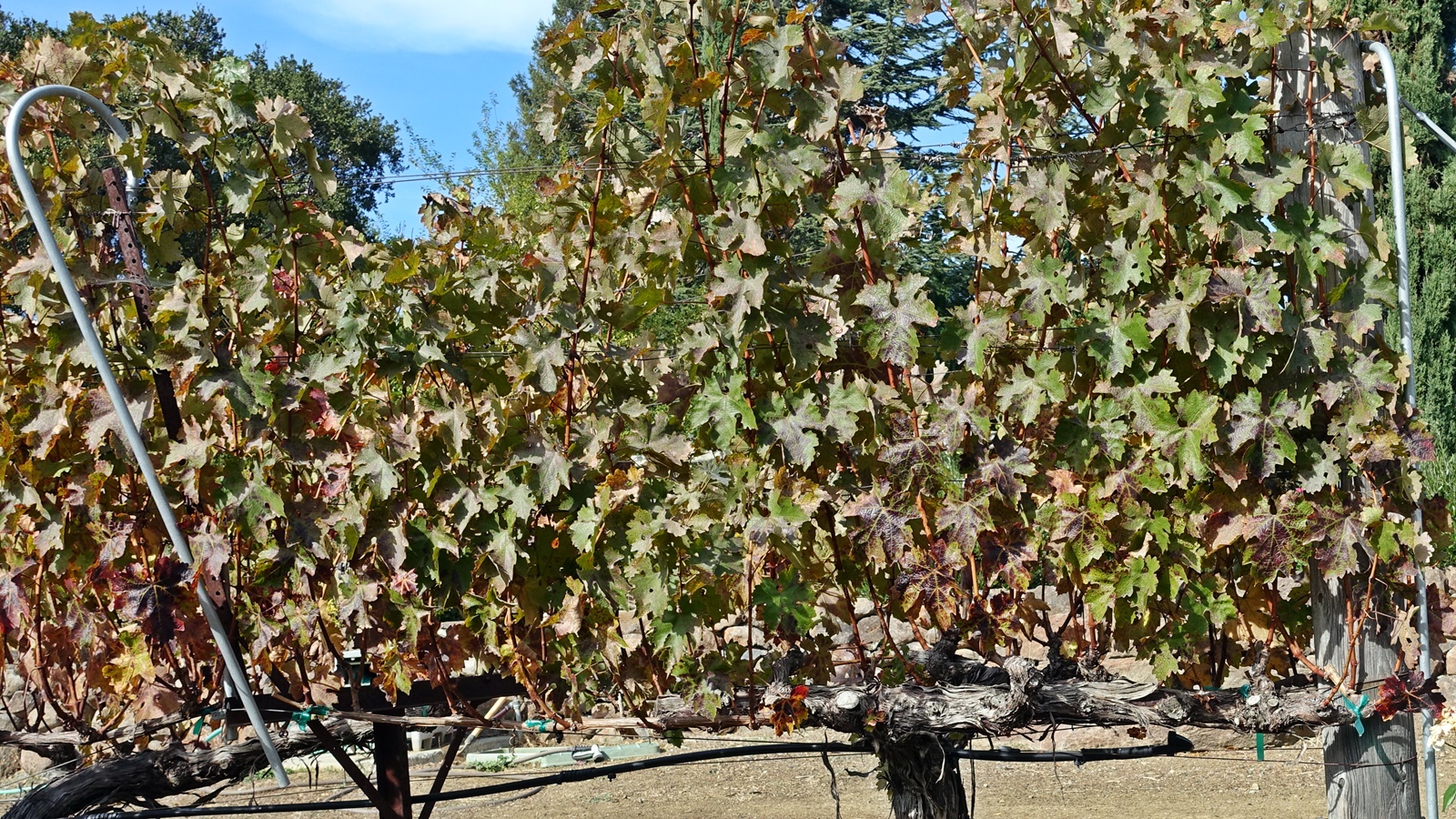
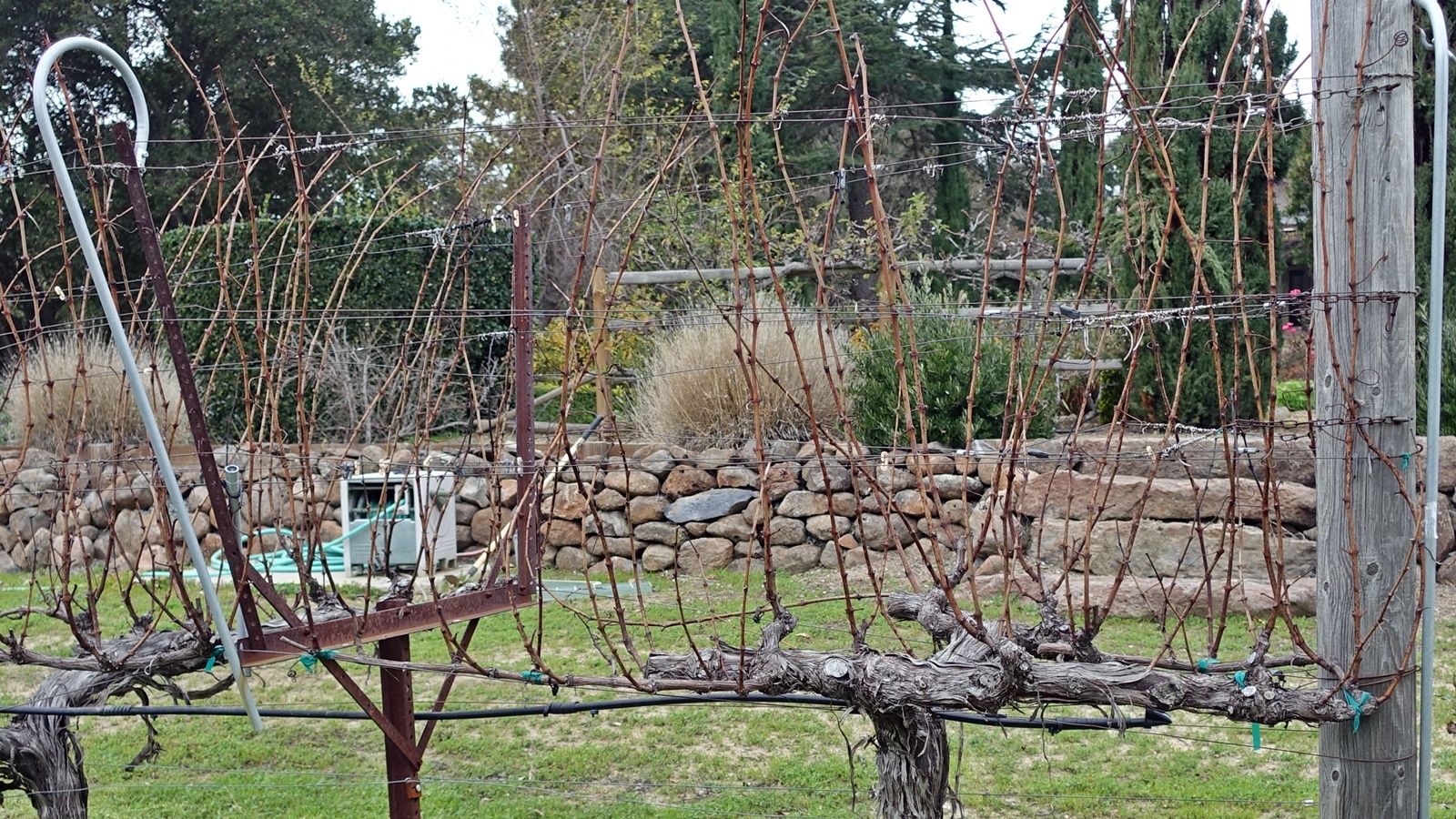
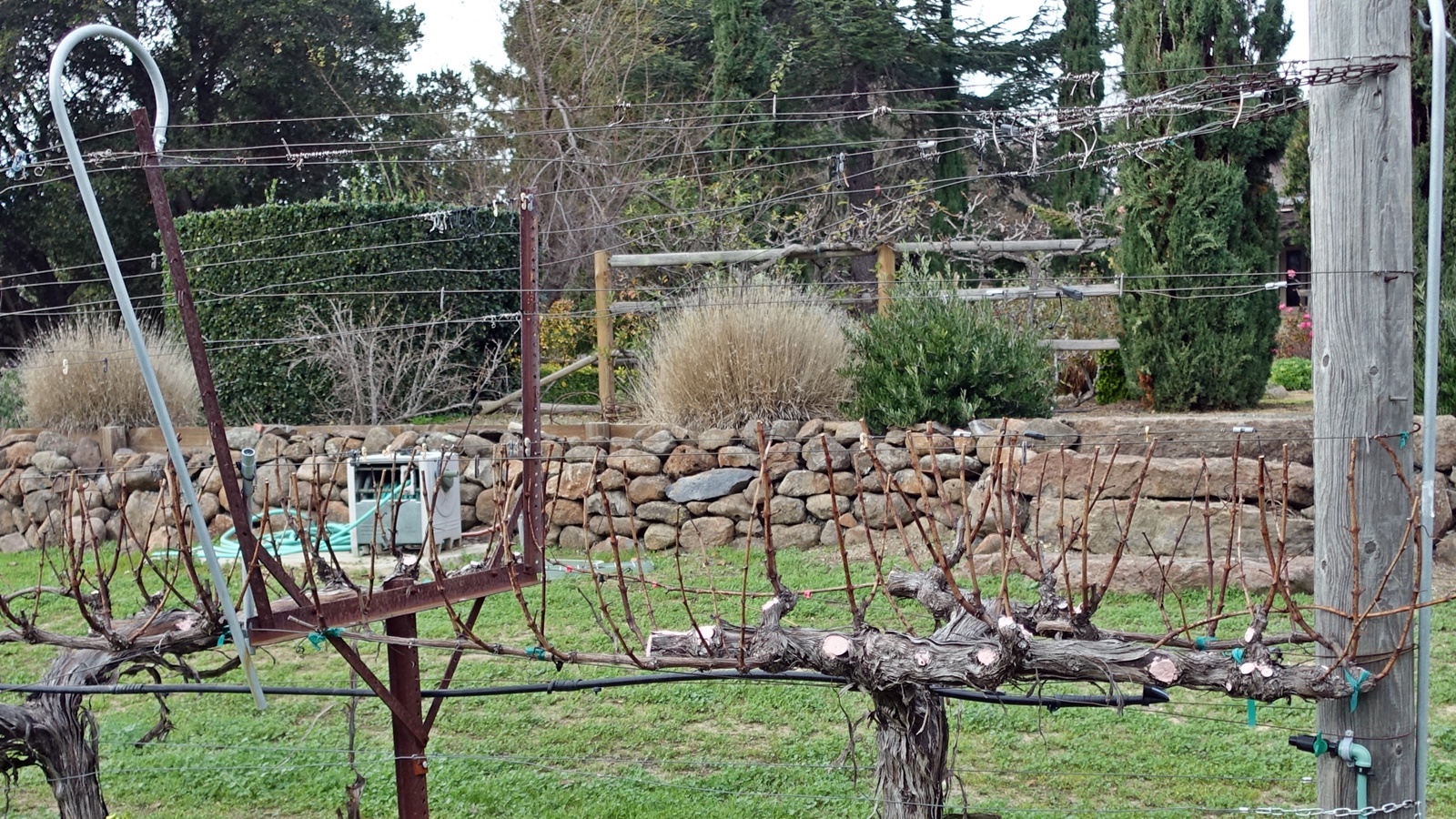
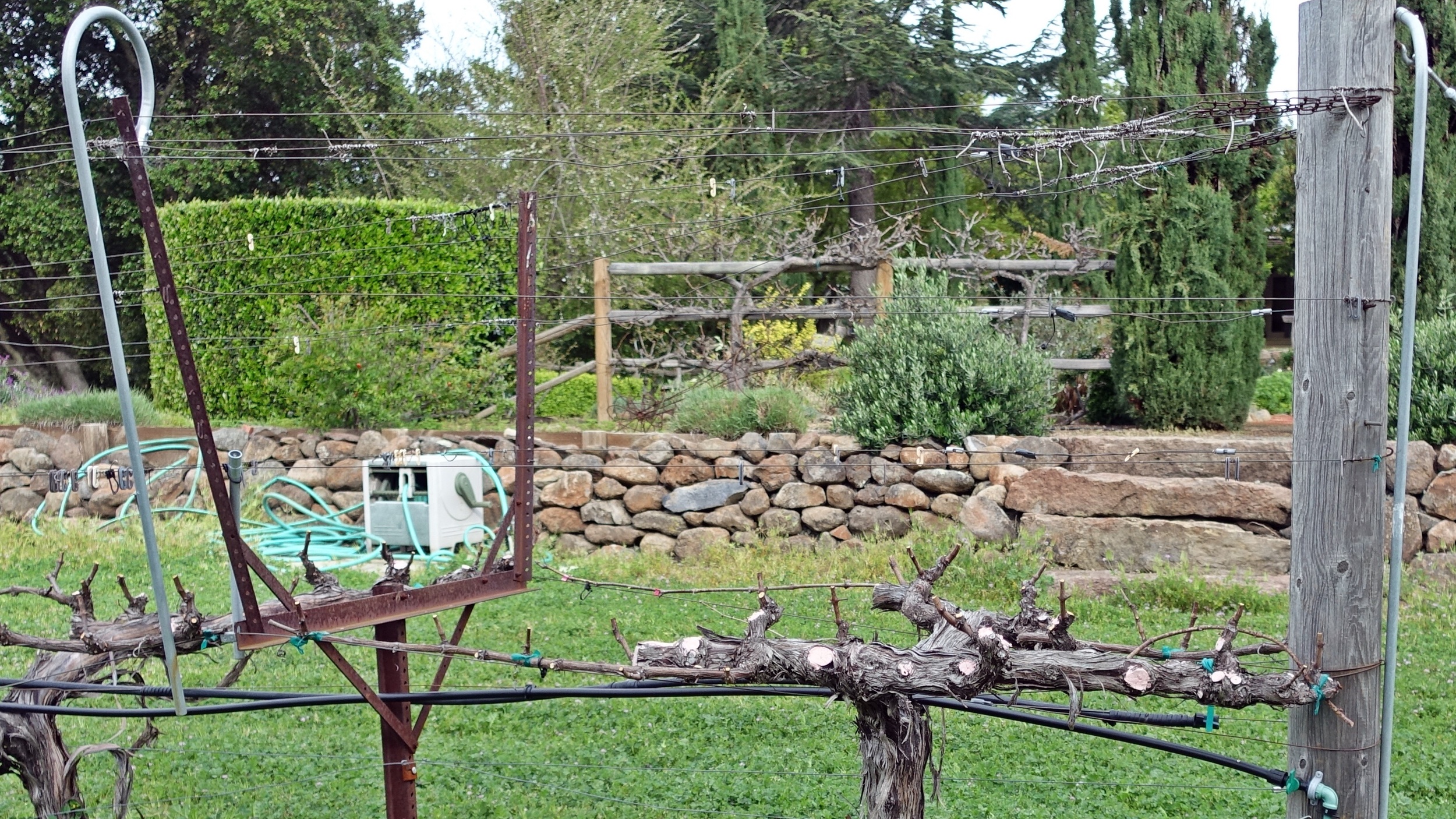
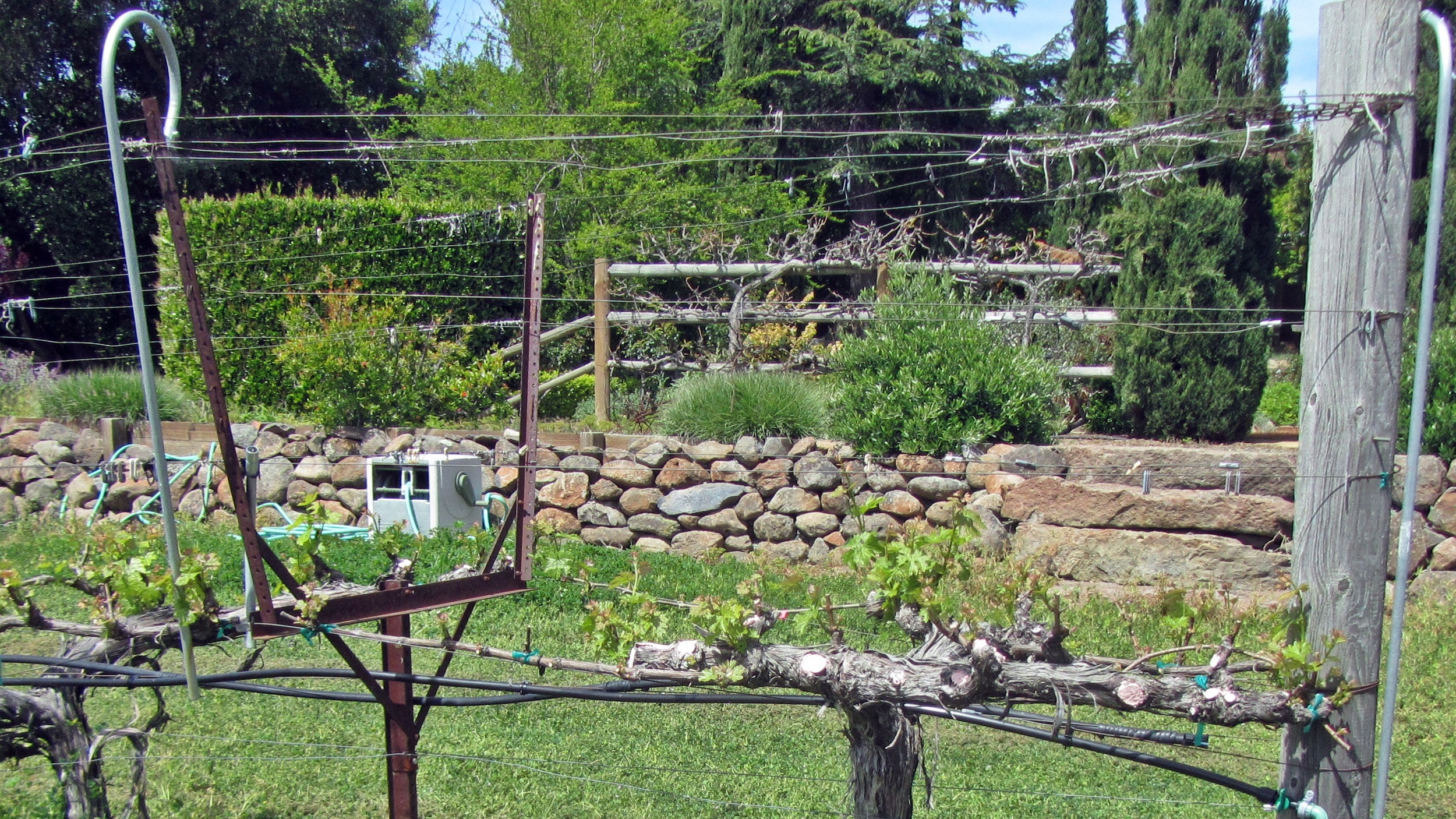
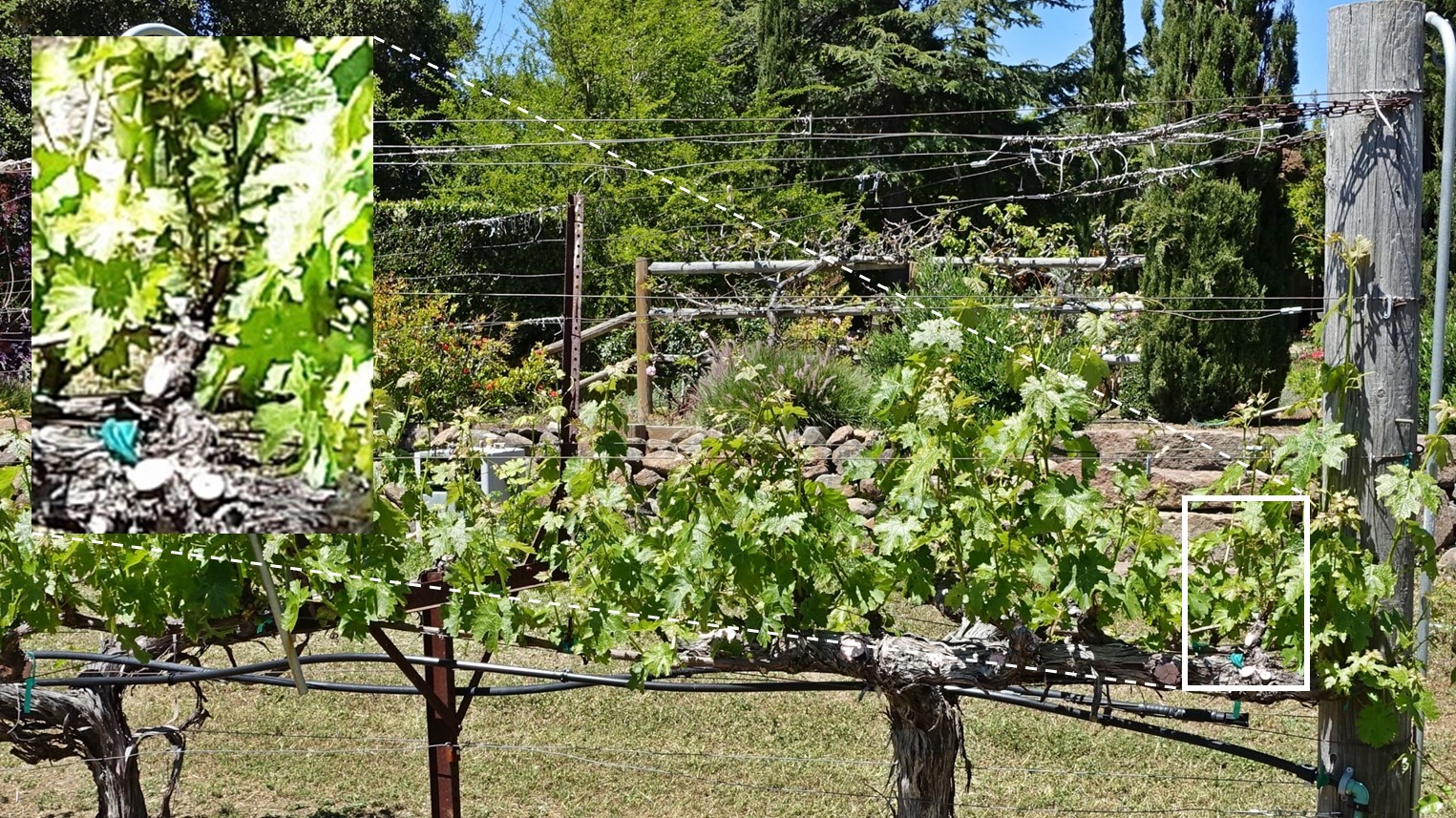
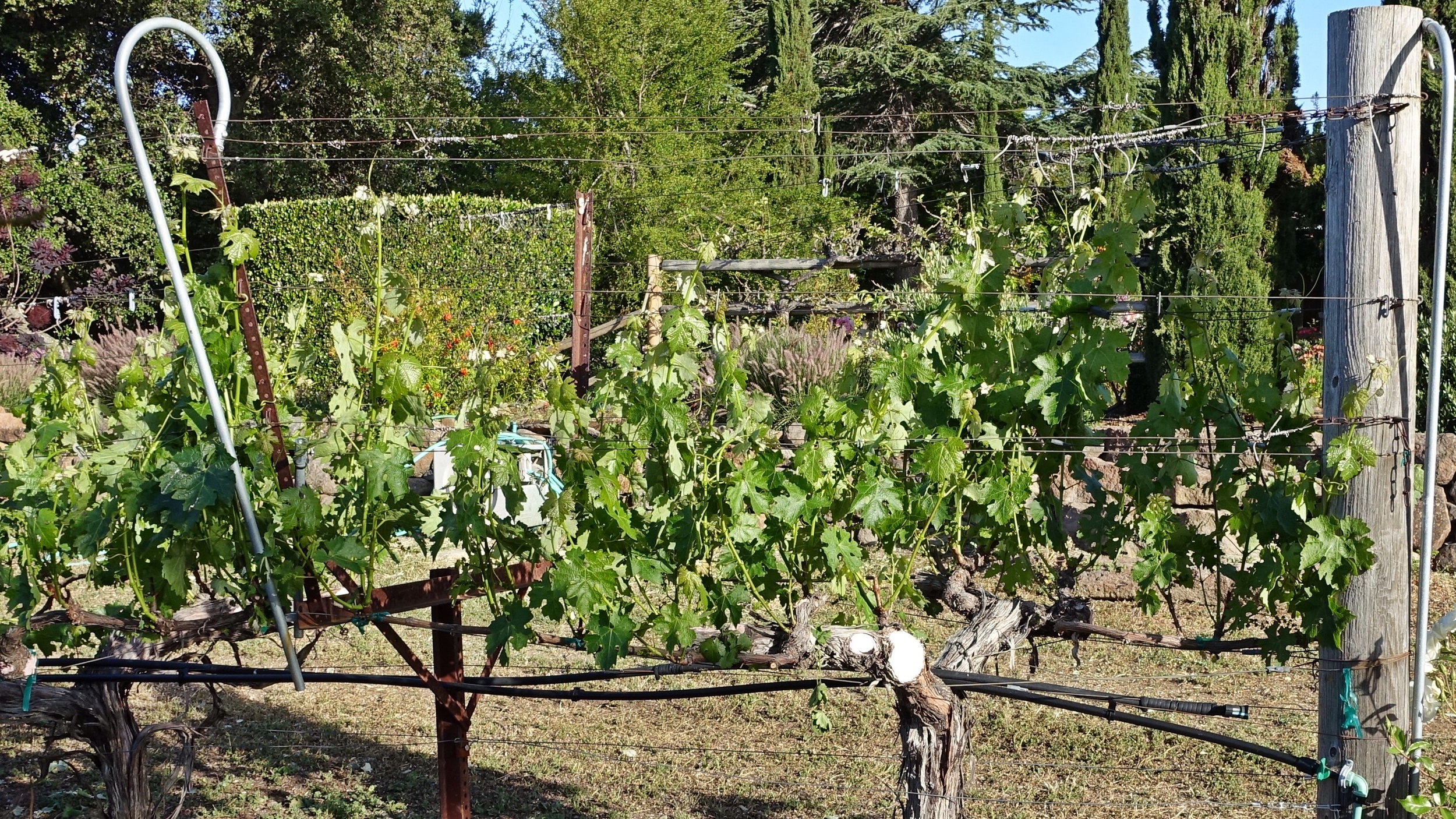
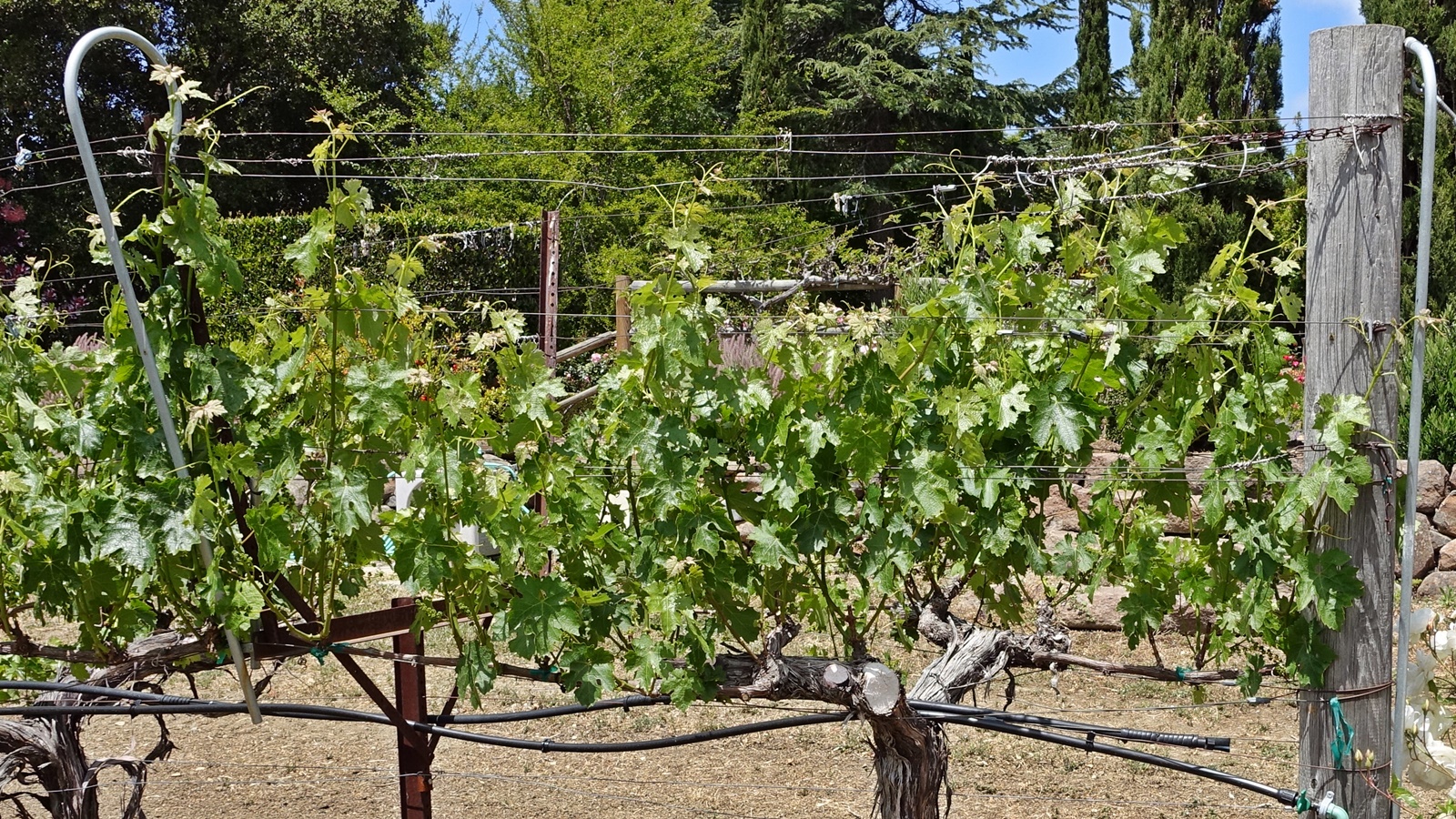
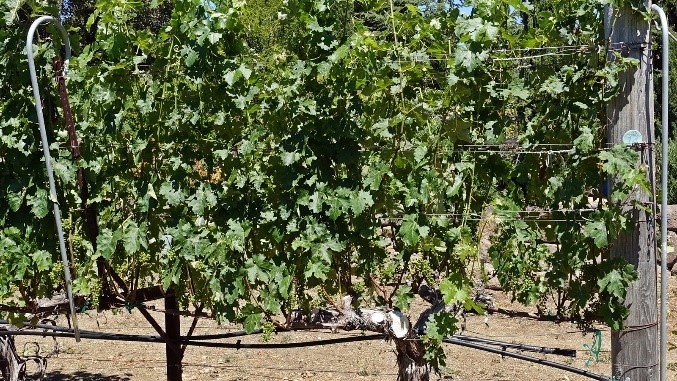
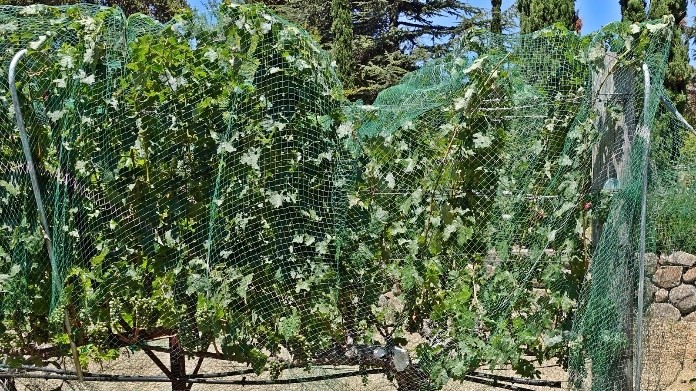
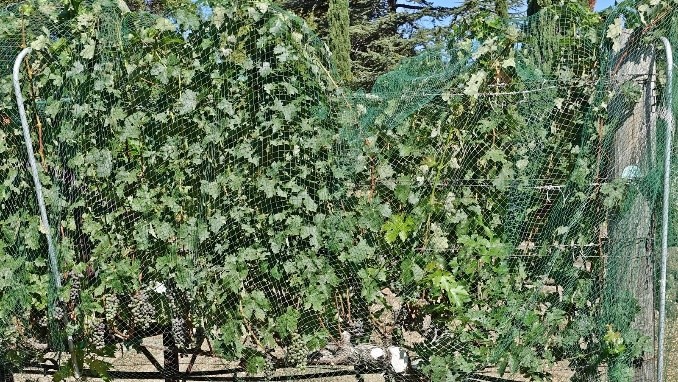
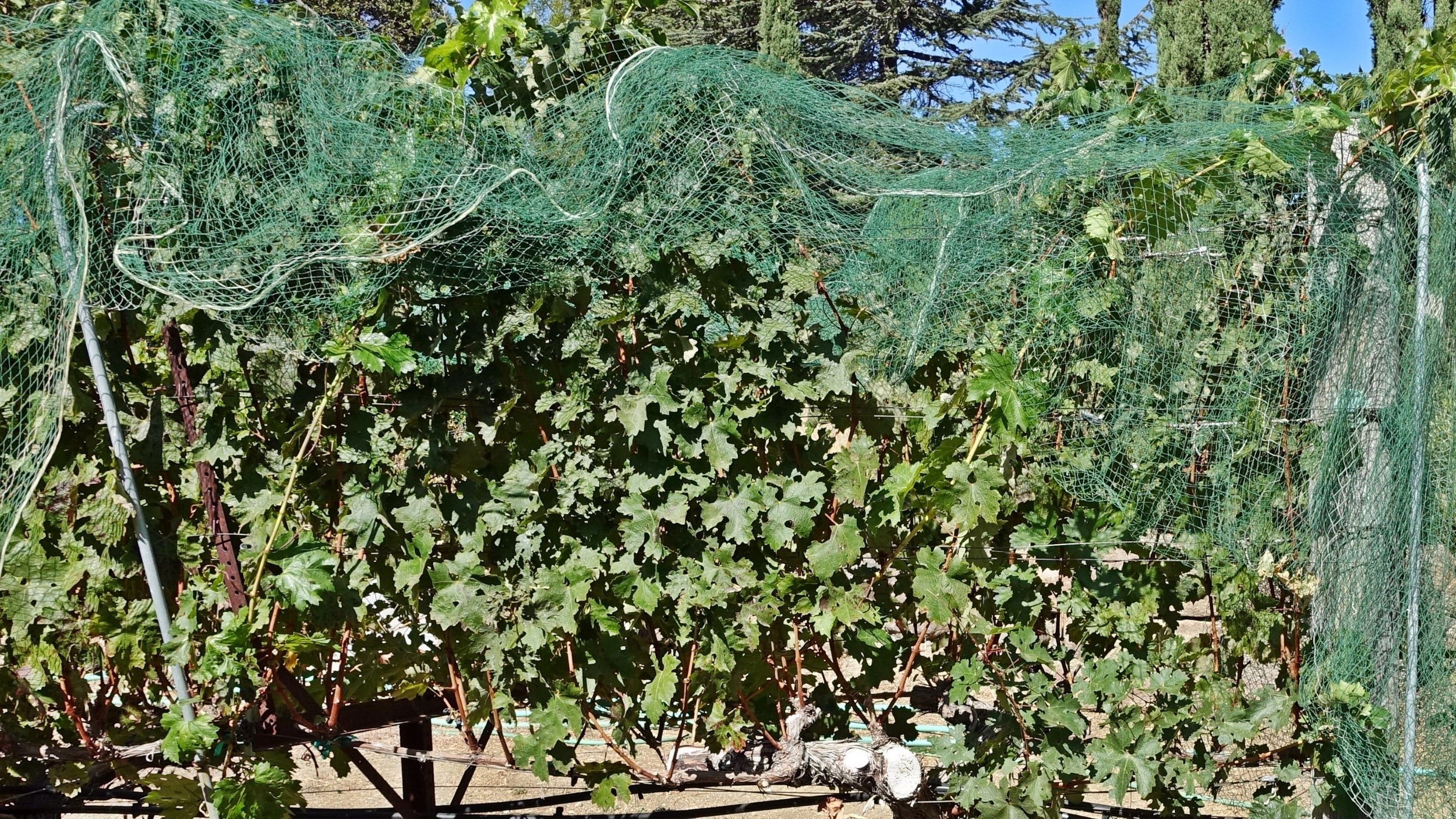
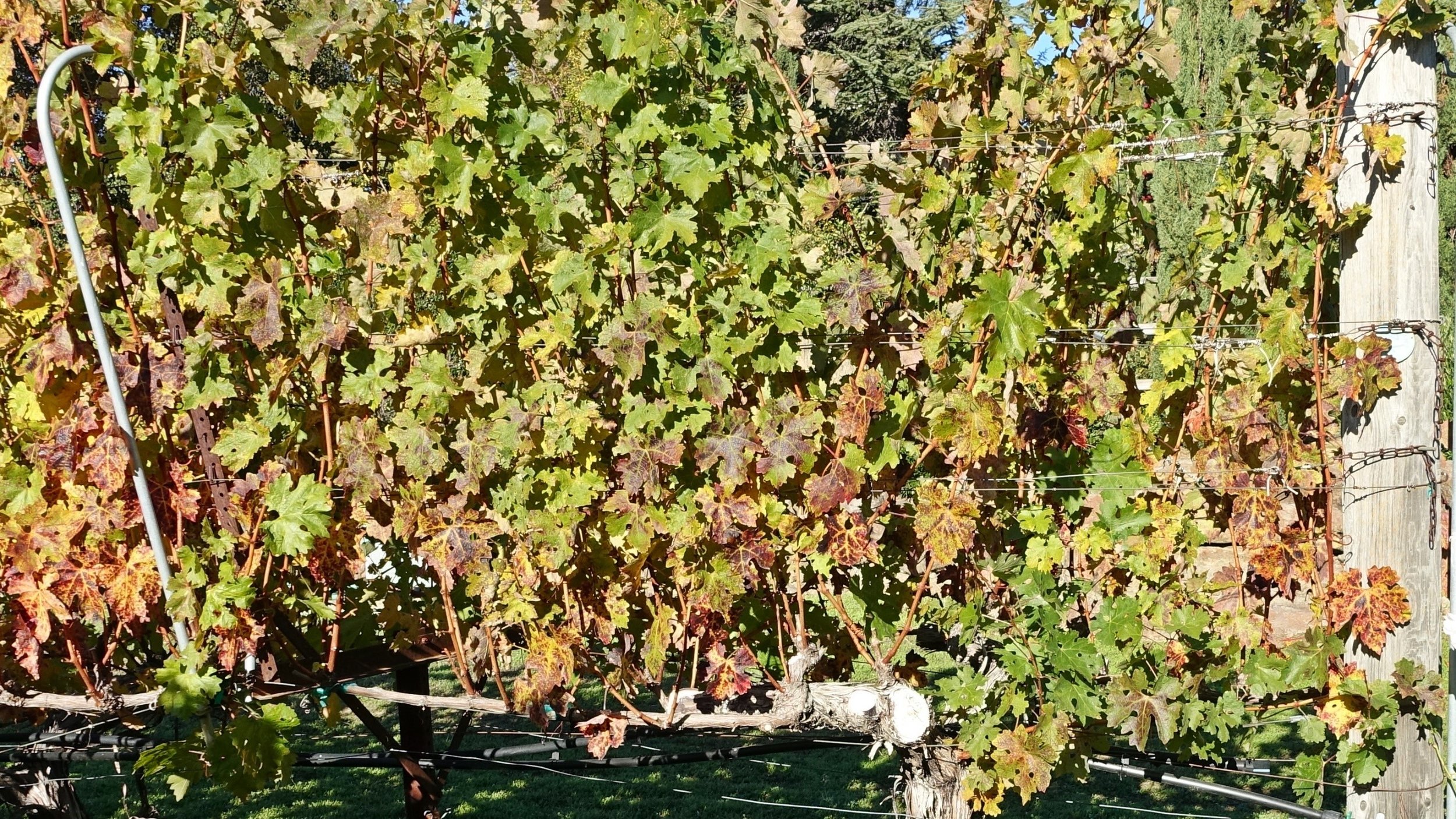
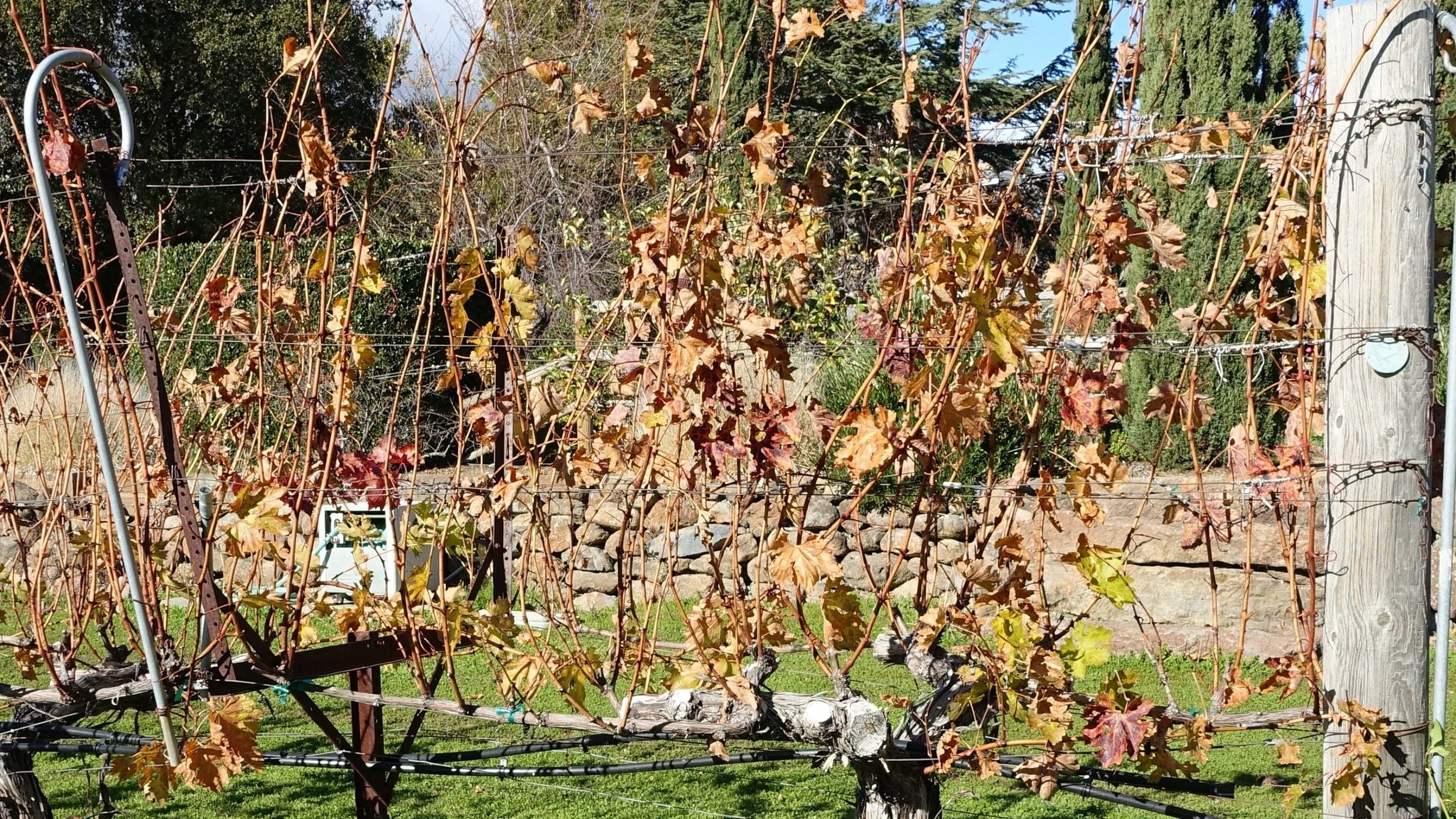
Leaves are falling while the vine above ground goes dormant.
By mid-December, all leaves have dropped, and the plant goes dormant until March. The vines accumulate carbohydrates in the canes, and roots develop further.
In late March, new buds swell and break out.
In April through May, new shoots are emerging from the buds.
In late May, the vine flowers (pollination of grape berries).
In June, the flowers set to berries, the berries get larges, and shoots grow longer through early August.
In August, the berries turn from green to red (Veraison), start to soften, and build up sugar. Anthocyanins are replacing chlorophyll in the berries.
Through late September, the berries ripen, accumulating sugar and tannins.
In late September / early October, the berries have reached full ripeness and are ready to be harvested.
In October, the leaves remain, and some turn red.
These pictures illustrate what a single vine looks like going through the year
In the context of this annual cycle, we divide Vineyard Management into four groups of activities and tasks:
Soil & Vineyard Floor Management involving ripping & tilling, mowing, and weeding
Plant Management involving: pruning, shoot-thinning, hedging, shoot-positioning, trellis repair, lateral removal, leaf-thinning, cluster-thinning, and Replanting & grafting.
Nutrition Management involving soil and foliar testing, soil amendments, foliar sprays, irrigation maintenance, and irrigation.
Pest Management: involving netting to protect berries from birds and insects, spraying fungicides (mostly against mildew), and preventing ground animals (gophers, squirrels, rabbits, deer, coyotes, and turkeys from harming the vines and their roots.
The following chart shows how the listed tasks align time-wise with the annual growth cycle
Management Practices 2000-2018
2000 – 2009 Getting Started: During the first ten years, we moved from outsourced vineyard management to doing everything ourselves.
The vineyard was planted in 1997 and managed for the first three years by Ron Mosley under contract. We watched the vines grow and organized the picking crew for the first harvest in 2000.
Starting in 2001, we engaged Rick Anzalone to support and teach us how to manage the vineyard ourselves. In 2002 we applied for an Operator Licence and started reporting the spray activity directly to the Santa Clara County Dept of Agriculture. We dropped the 2002 and 2004 vintages due to mildew, a consequence of not spraying diligently. Until 2004 we sprayed by hand with backpacks and hoses.
In 2006 we took over all the work in managing the vineyard. We discontinued using herbicides (Roundup) under the vines and started tilling instead. Unfortunately, we did not fight an invasion of gophers which ended up eating the roots of 40+ vines in 2007 & 2008. We continued to keep poor records on our vineyard management practices
In 2009 we replaced 47 dead vines with new plants. We did more shoot thinning and leaf thinning to reduce mildew. We were far more aggressive in pruning the old vines back to increase grape quality. However, this backfired as we did not protect the large cutting wounds adequately, and the vineyard got heavily infested with Eutypa (“Dead Arm Disease”). Consequently, we had to cut off and regrow most cordons over the next eight years, which reduced crop yield by close to 70%!
The following table summarizes the vineyard practices 2000 – 2009
2010 – 2015: Better data collection & improving practices: During the next six years, 2010 – 2015, we further enhanced our practices. The following table provides detail during this period.
In 2012 we started to take detailed notes on our vineyard practices. We finally succeeded in keeping the deer out and the gophers under control. We began to remove all laterals to control canopy growth. In 2012 we switched to pruning with electric shears. We removed most laterals to contain canopy growth, and we thinned the crop to even out maturity. 2013 produced the highest quality fruit.
In 2014 we started pruning in 2 passes to limit further new Eutypa infections, which we continue to fight. We bought another 50 new plants with the idea to replace Eutypa damaged vines, this time Merlot. We also started to monitor berry development during final maturity, measuring Anthocyanins
In 2015 we started using Vitiseal, a new sealant for cutting wounds against Eutypa and other fungi. The results were very encouraging. Unfortunately, we were distracted with planting the upper vineyard and failed to spray early in the season, so we got significant mildew infections which led to poor fruit set and significant mildew damage.
2016 onwards: managing multiple varietals: In late 2014, we decided to plant a second vineyard in the upper field with vines that complement Cabernet Sauvignon for Bordeau blends: Cabernet Franc, Petit Verdot, and Merlot. We planted in spring 2015. The following five-year period is mostly about further improving the vineyard practices and getting a handle on keeping more valuable records.
In 2016 we updated the irrigation for the new and weaker plants, and we continued training new arms off the main trunks on Eutypa infested vines. The retraining succeeded beyond expectations. The crop yield rebounded after four years of decline from a low of 1000 lbs in 2015 to over 2400 lbs in 2016. We decided against dropping the second-year fruit in the Upper vineyard as the vines grew faster than expected. We also started to record time spent on each task in a spreadsheet. The graphic on the right shows the first result for 2016
In 2017-18 we focussed on retraining the new arms in the Eutypa-infested plants in the lower field, and we brought the upper field on stream. The graphic above shows how the Cabernet Sauvignon yields in the lower field continued to rebound from the 2015 lows and how the blocks in the upper field (Merlot, Cabernet Franc, and Petit Verdot) started to produce. In 2017, we began tracking activities for the six different vineyard blocks. We realized that we hit a brick wall in data management with Excel and Word. So, 2016 was the last year for comparison.
In 2018 – 21 we focused on improving the spray programs and changed the netting from annually installed full covers to permanent side-nettings. We expanded the database and backfilled it with historical data.
The following screenshots compare the weather conditions, the vineyard activities, the berry maturation, and the harvest yields for the 11 vintages since 2009:
Data Management
Managing a vineyard of our size is much more based on qualitative observations than quantitative measurements. You monitor whether a plant looks and feels OK rather than measure data and optimize results. We recorded our actions in word documents and tables through 2016 and experienced increasing challenges in making practical use of the records. So, in 2018 we started to track our activities in the database. It will take some years to see the benefits of this effort
Following are screenshots of the “REVIEW: Vineyard Actions” – Layout. The first lists all the individual activities of 2018, the substances added, and the manhours spent on each (note the list is longer than the screenshot reveals). The second provides an overview of the “substances added,” the Sprays and Soil Amendments. The third shows the cumulation of manhours by vineyard block and type of activity, and the last screenshot summarizes the weather conditions.
Click HERE to download a pdf file of the contents of the VINEYARD section
Previous page: Home
Top of page: Go
Next Page: Site Preparation
Last updated: March 29, 2021








